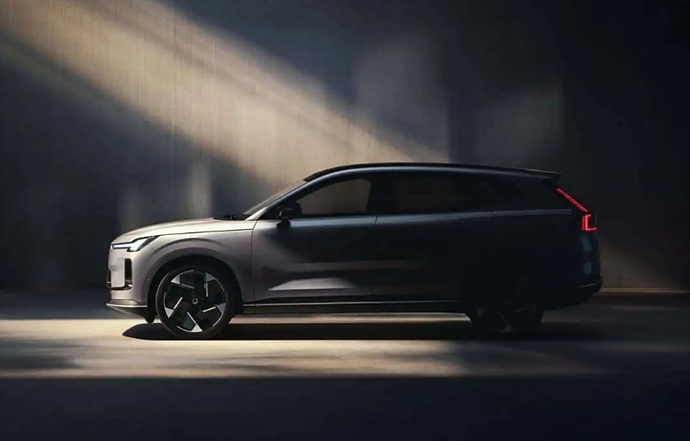
Volvo is reviving the familiar XC70 nameplate for a newly developed plug-in hybrid SUV designed to meet growing demand in China. The model will debut as an Extended-Range Plug-in Hybrid (ER-PHEV), offering a 200-kilometer (124-mile) all-electric range under China’s CLTC testing cycle. This is more than double the range of the current XC60 PHEV, positioning the XC70 as a balanced alternative between fully electric and conventional vehicles.
New Platform, Familiar Purpose
The new XC70 is the first vehicle to be developed on Volvo’s Scalable Modular Architecture (SMA) – a next-generation platform tailored for extended-range plug-in hybrids. SMA supports high-capacity battery systems and fast-charging technology, and it will serve as the foundation for future Volvo ER-PHEV models.
From a design standpoint, the XC70 reflects Volvo’s latest SUV language, sharing a similar front fascia with the EX90. Compared to the XC60, the XC70 offers more interior space and a slightly larger body, catering to families seeking comfort and practicality.
Launch Timeline and Market Focus
Volvo plans to release the XC70 in China by the end of 2025, with potential expansion into other global markets – including North America and Europe – currently under evaluation. The strategy is aimed at consumers transitioning to electric vehicles who still prioritize long-range convenience and hybrid flexibility.

Meeting China’s Growing Demand
As Chinese consumers seek plug-in hybrids capable of long-distance travel, the XC70 meets that demand head-on, giving Volvo a competitive advantage in a rapidly evolving segment.
SMA Platform as a Strategic Pivot
The SMA architecture allows Volvo to develop a diverse lineup of electrified models, balancing technical adaptability with production efficiency—a key pillar of its electrification roadmap.
Global Potential and Electrification Strategy
Volvo’s consideration of a global launch for the XC70 reflects rising demand for ER-PHEVs in Western markets, aligning with broader trends toward hybrid mobility and consumer demand for transitional technologies.























